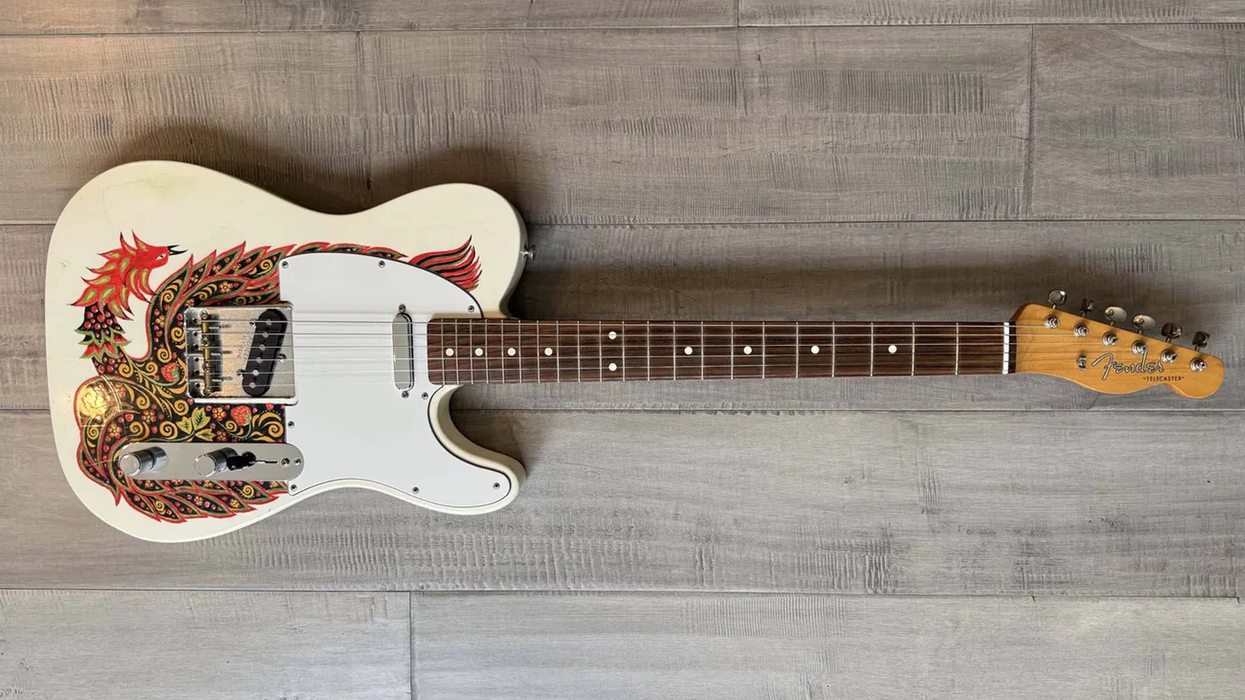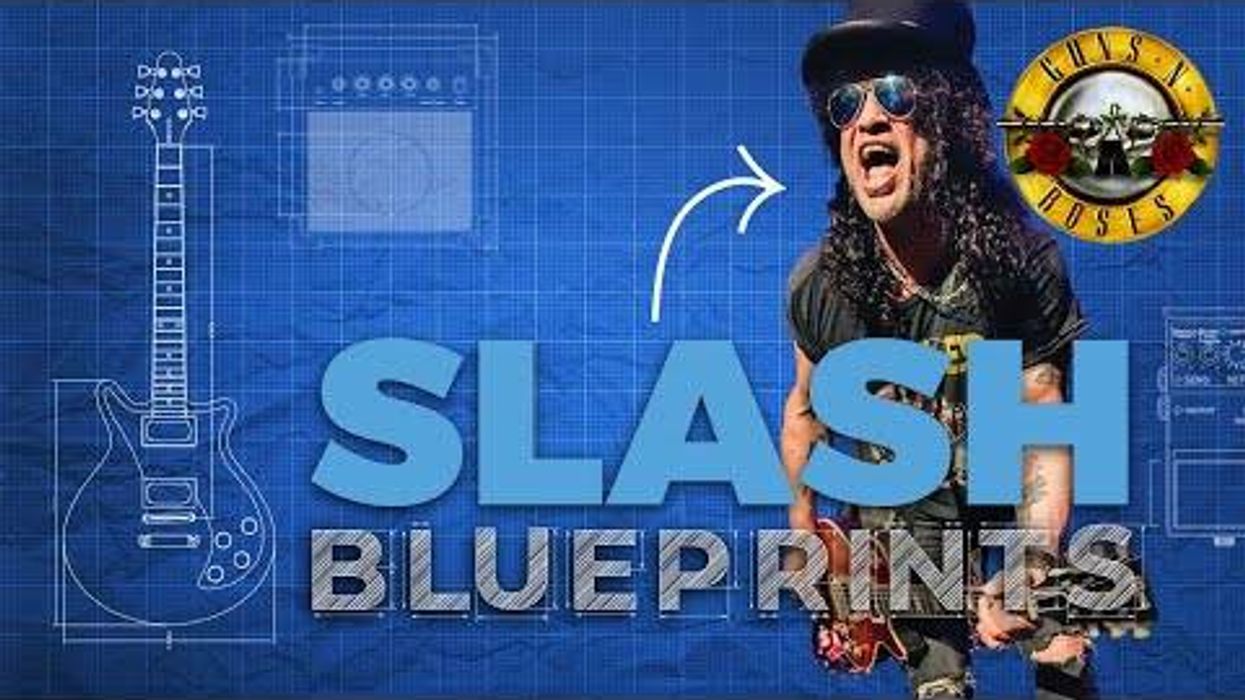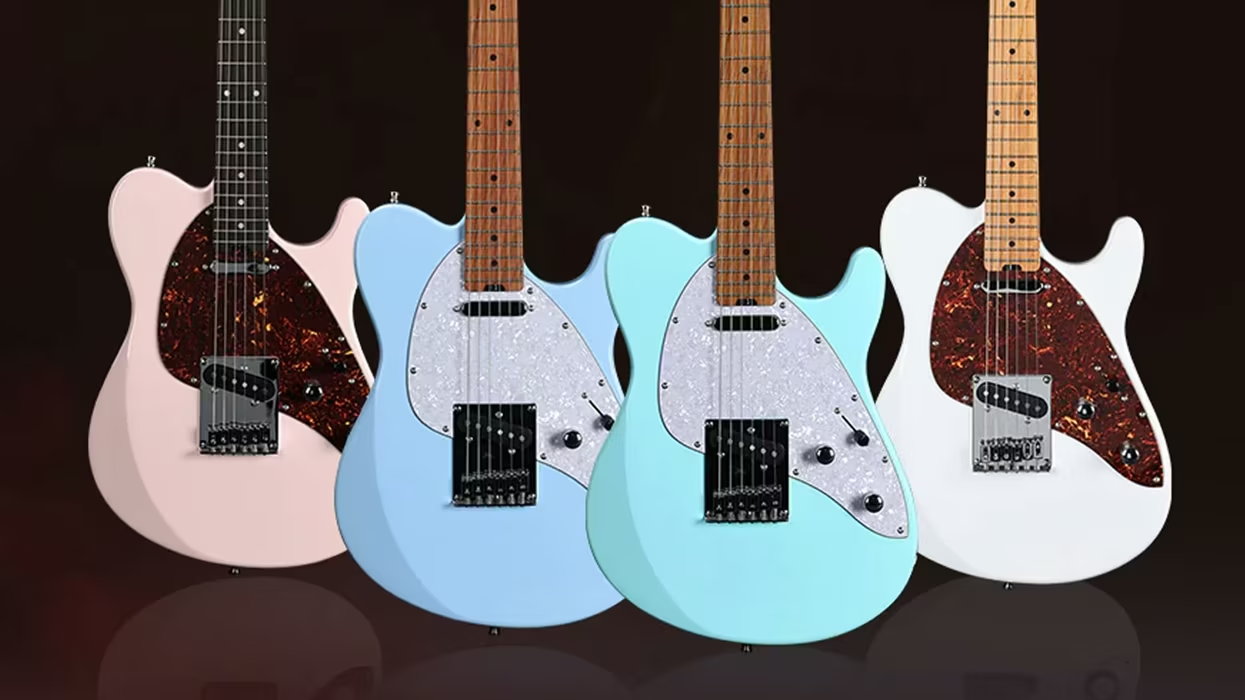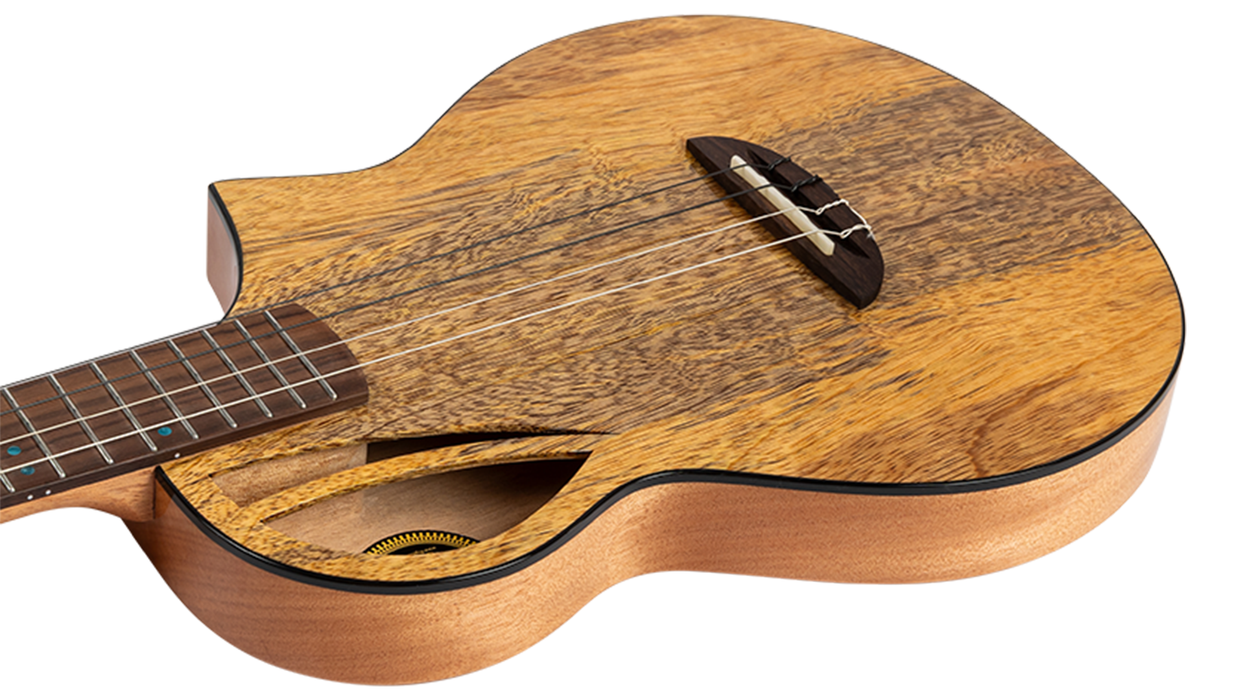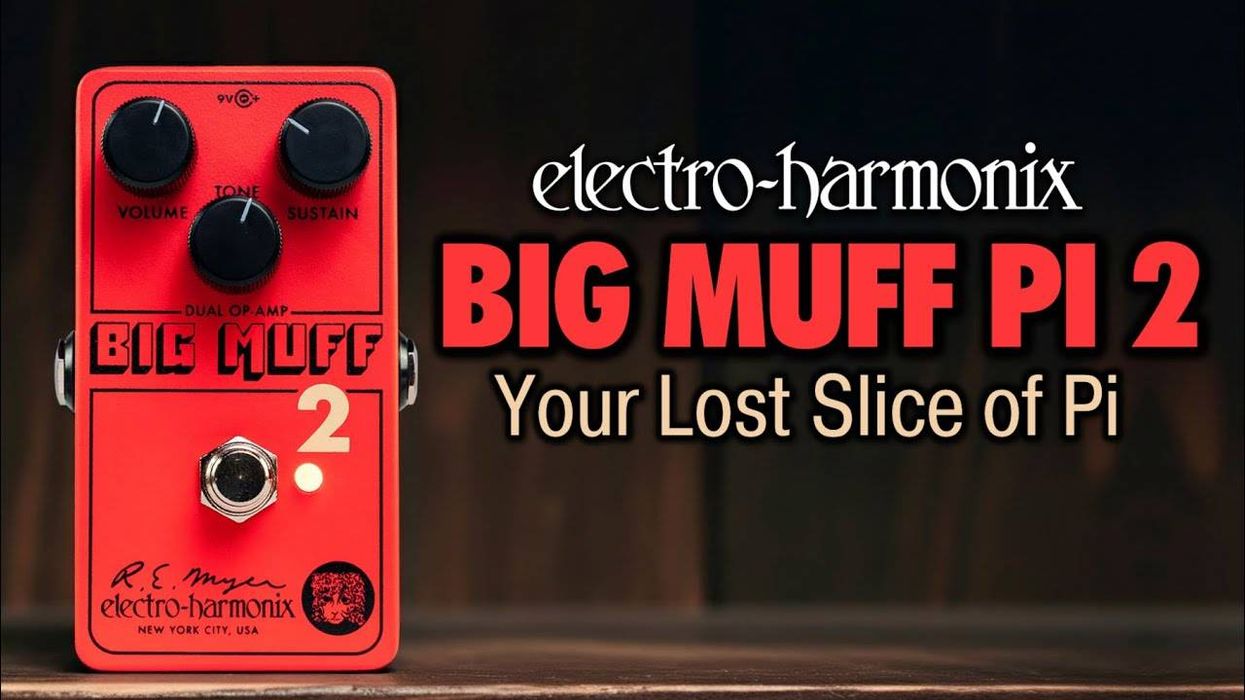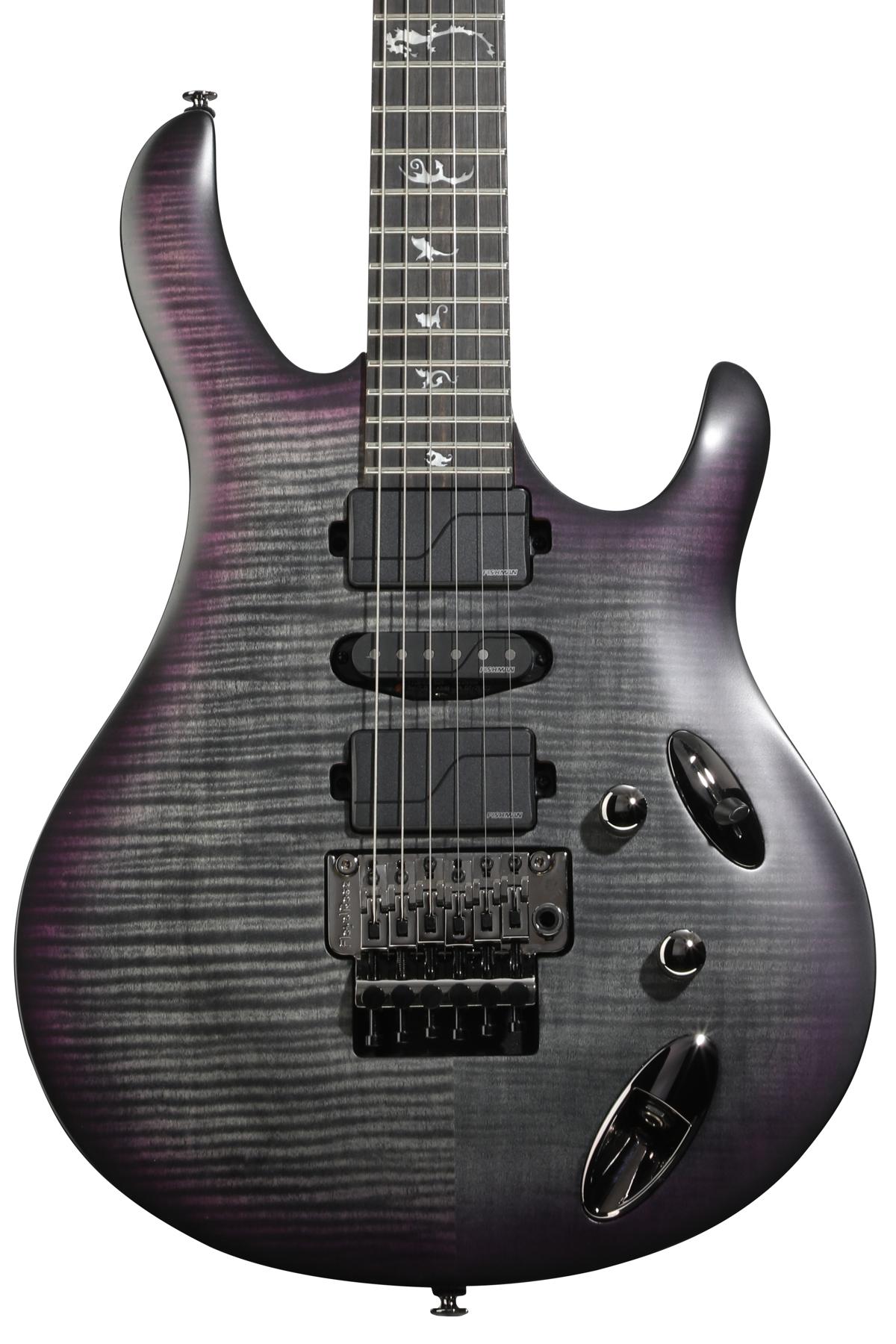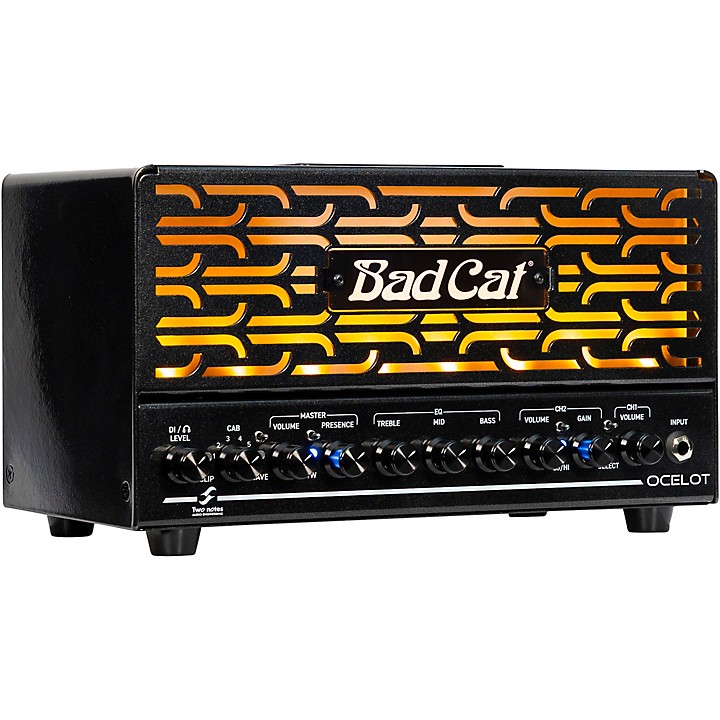The electric baritone guitar has been
popping up on pop, rock, and country
records for almost as long as the standard
6-string. Brian Wilson was a huge fan, utilizing
its unique tone and capacity for lower
tuning registers to help create the expansive
textures of many classic Beach Boys
cuts. Danelectro baritones were a staple of
Nashville recording studios. And players
as diverse as Pat Metheny, Peter Buck, and
Duane Eddy have used electric baritones
as a secret weapon of sorts. It’s also found
favor among modern heavy rock and
metal players, most notably Staind’s Mike
Mushok and Metallica’s James Hetfield, the
latter of which used one for rhythm tracks
on “Sad But True.”
Gibson built 6-string basses decades
ago, but only in the past decade has the
company combined the qualities of the
baritone guitar with their classic Les Paul
design. The initial run was a short one, but
they’ve revisited the concept with the new
limited-edition Les Paul Studio Baritone—and the results are no less impressive than
they were the first time around.
Devilish Details
Despite the original Les Paul Baritone’s
short life on the market, it found a lot of
fans. After it went out of production, prices
for the original pewter-finished instruments
more than doubled the original
price. The demand is rooted in much more
than novelty and collectability, though—the marriage of Les Paul humbucker heft
and the long scale makes the Les Paul
Studio Baritone a unique and formidable
sonic tool.
This new bari Les Paul has a lot in
common with Gibson’s original release. It
employs the same 28" scale, which means
its one-piece mahogany neck is a full 3
1/2" longer than a standard Les Paul’s.
This keeps the string tension tight in lower
tunings such as C (C–F–Bb–Eb–G–C), B
(B–E–A–D–F#–B), and A (A–E–A–D–
F#–B), while retaining the percussive snap
and low-end tightness that you lose when
tuning a standard-scale guitar down that
low. It’s a sound and feel that cannot be
completely replicated by simply throwing
a heavier set of strings on your regular Les
Paul and dropping the tuning.
Because of the extra 3 1/2" in scale
length, two additional frets have been
added, giving the Les Paul Studio Baritone
a 24-fret, two-octave runway. Like the first
Les Paul Baritone, the neck’s profile is the
company’s standard rounded ’59 shape.
And the body is finished with a thin coat
of nitrocellulose lacquer for maximum resonance
and wood breathability.
The guitar’s chambered, two-piece
mahogany body is remarkably light,
thanks to internal tone chambers. Because
of that and the longer scale, I expected
it to be neck-heavy. But it remained balanced
when I adjusted the strap to tilt the
neck a little higher than the body. The
beautiful two-piece maple cap is finished
in Honeyburst—the only color available
at this time—and the edges are stained a
lovely golden hue that gives the guitar a
subtly luxurious vibe.
Gibson made some very practical
changes to the electronics in the newest
Baritone. The original version had 490R
and 498T humbuckers with alnico 5 magnets
and metal covers. However, because
a prominent treble response can give baritones
a more balanced sound and keep the
inherently pronounced low-end frequencies
tight and audible while adding detail and
emphasis to highs that would otherwise
be a dull thud, Gibson installed a pair of
uncovered ceramic-magnet humbuckers—a 496R in the neck position and a 500T
bridge pickup—this time around. The
496R and 500T are much hotter and
brasher sounding than the vintage-voiced
490R and 498T in the original, but their
ability to handle low frequencies and
enhanced highs alike gives them an edge
over their lower-output predecessors.
Lay It Down
I tested the Les Paul Studio Baritone by
plugging into a Bogner Brixton head and
a Bogner 2x12 cabinet. I couldn’t help
belting out some power-chord-fueled metal
riffage, and the sound was tight and huge,
with the thick, solid midrange that Les
Paul’s are known for and highs and upper
mids that cut through like a bolt of lightning
over the thundering low end. Rather
than an overbearing, sludgy tonality, the
guitar sounded firm and full, with the low
end serving as a foundation for the mids
and highs rather being the dominant quality.
Tonally, this guitar is very balanced,
despite its specialized function.
The Baritone came strung with
Gibson’s standard .013–.060 baritone
strings and tuned to the key of C#.
Intonation was spot-on, and the superb
setup made the guitar exceptionally playable.
The extra scale length made the
thicker strings feel as slinky as .010s,
and playing one-and-a-half-step bends
in the middle of the neck was almost
effortless—so much so that I had to be
careful not to bend double stops too
sharp. It takes some mental recalibration
to get used to the added neck length, but
the guitar’s playability of the instrument
speeds the process considerably.
The Baritone’s comfort and surprising
ability to handle note separation led me in
very unexpected directions. From downtuned
metal, I moved to bluesy single-note
runs and arpeggiated rock melodies, and
the amount of detail and bounce in every
note was astonishing.
I spent the next hour recording an
impromptu song in the vein of the Cure’s
“Burn,” with its chugging, sixteenth-note
pattern, to see how the LP Studio bari fit
in a band mix. I coaxed a glistening clean
tone out of a Bogner Barcelona 40-watt
combo—which was surprising, considering
the 500T’s hot output—and the guitar
sat beautifully in the multitrack mix. Not
only did it make a great complement to
the two standard electric guitar tracks, it
also lent more definition to the bass track.
The tone was even more expansive when I
switched to the neck pickup. However, the
496R can sound so big that I found myself
wishing for a coil-tap switch. Some of the
best baritone-guitar recordings were made
with single-coil-equipped guitars after all,
and their piano-like qualities—especially
on the low strings—can make a baritone
much more manageable in the studio.
The Verdict
Gibson’s new Les Paul Studio Baritone is
much more than a flash-in-the-pan rock/metal machine—and it’s more than a
Nashville studio tool, too. It’s a vibrantly
tuneful and wide-ranging guitar that
can work in countless musical settings
thanks to its versatile tones and inviting,
familiar-feeling ergonomics. Though a
coil-tap function would give the well-matched
pickups even greater range, careful
manipulation of the Volume and Tone
knobs yields a variety of usable sounds.
If you’re looking for tones that are even
more burly and muscular than a standard
Les Paul, this unique instrument can definitely
deliver.
Watch the video review:
Buy if...
you crave the punch of lowered tunings but aren’t willing to sacrifice treble and mid response.
Skip if...
you prefer single-coil-fueled bari tones.
Rating...
Street $1389 - Gibson - gibson.com |


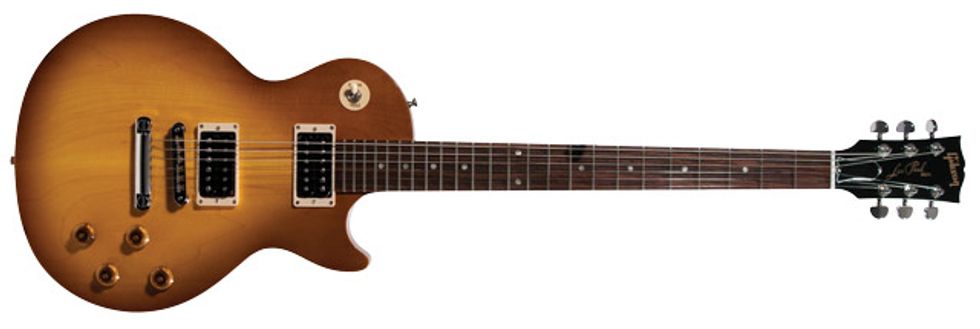





![Rig Rundown: Russian Circles’ Mike Sullivan [2025]](https://www.premierguitar.com/media-library/youtube.jpg?id=62303631&width=1245&height=700&quality=70&coordinates=0%2C0%2C0%2C0)







